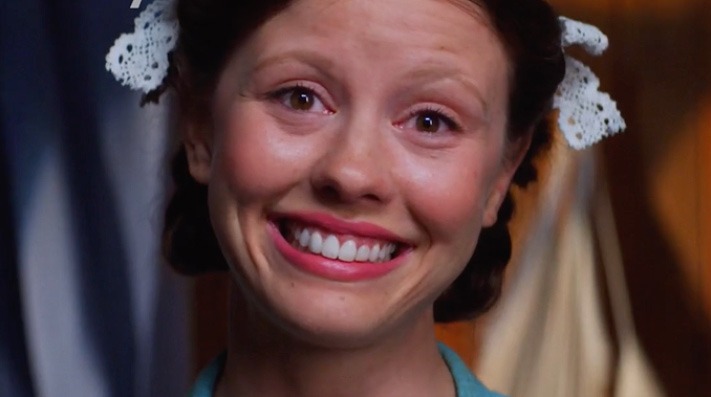Majdoulin Almwaka’s 2022 research into the complexities of female agency in the “final girl” horror trope gave me lots to digest about where we’re at with exploring a role where a woman is left to confront the evil, tell the tale, and more often than not, reinforce existing cultural norms and gender roles. They explore how this particular trope often never acknowledges real male violence, instead representing the villain as an otherworldly evil, or continues to vilify a woman’s moral culpability in ways that make her victimhood deserved.
It has been hard to separate these final girls from sexual violence, passivity, inherent unworthiness, and an inability to control their own fate. In fact, many final girls are represented only to give reprieve and redemption to the viewer who likely just watched many other women be violently ended throughout the film. The final survivor is there to allow the rest of the plot to happen without consequences. This trope has been skewered a few times in films like Scream (1996),Cabin in the Woods (2011), and other examples of a “final girl” finding agency and empowerment within the plot. However, two recent examples feel like a step in an interesting direction, while sitting firmly and ironically within bygone eras. Ti West and Mia Goth’s X and Pearl both center a woman, one a victim and one the perpetrator. One is a final girl and one is… almost?
X premiered at SXSW and is set on a farm in Texas. Maxine (Mia Goth) and a small crew of adult filmmakers and actors have rented the guest house to get some filming done. Owen Campbell, Jenna Ortega, Brittany Snow, Martin Henderson, and Kid Cudi are in supporting roles. Stephen Ure and Mia Goth (in a dual role) co-star as the elderly farm owners, Howard and Pearl. In X, women find empowerment in and advocate for consensual sex work, allowing for the idea of alternative relationships, and evolving past the ethical implications of sex and sin. In fact, the person least interested in busting stereotypes and breaking tradition is a man. There is little in the way of prudishness and implications that the women are due for a comeuppance. It flies right into the face of the typical final girl. There’s even a more “innocent” character who, in an alternative film reality, would be more likely to end up as the final girl due to her relative lack of sin. And yet Maxine is our unapologetic hero subverting expectations. On the other end, Pearl kills out of rage and envy. But her homicidal nature isn’t driven by a desire to punish those who fornicate, but rather due to envy that she herself doesn’t still have the same raw sexual power.
In the follow-up prequel, Pearl, West and Goth co-write to bring us the origin story of the mysterious, unhinged Pearl, now seen as a young woman waiting for her husband to return from war. Pearl was conceived and written during a two-week COVID-19 lockdown to film alongside X. Again played by Goth, Pearl shares some of Maxine’s characteristics including her all-consuming need to achieve fame and unabashed enjoyment of sex. In a scene with Pearl’s one-time lover, the cinema projectionist (David Corenswet) shows Pearl an early adult film. Pearl watches intently with neither shame nor judgment. Considering this is the early 20th century, not every portrait of a woman would be so open-minded. It brings full circle the history of these two lives, both obsessed with fame, sex, and hedonism, without giving up on agency and fulfillment as a character. We can like and dislike aspects of each without giving in to the final girl trope of saving her for her purity, her redemption, or her need to absolve the audience of their enjoyment of the gore.
Now A24 is giving West and Goth a crack at telling another feminist horror tale as Maxine heads to Hollywood to continue her journey for elusive fame. This track record makes me ravenous for the tiny glimpse of MaXXXine and its take on the 1980s VHS boom. This particular boom gave the average person access to libraries of formerly inaccessible media (including porn) and gave films a second life to build an audience for the first time ever in film. And when it comes to pornography, more people could access and enjoy what was previously maligned.
Will Maxine continue to push through societal expectations of worthy victimhood to write her own narrative? Only the 1980s will tell.
Catherine Clark is a Chicago-based editor and designer who spends time reading, gaming, writing, and producing independent films, and of course, watching movies en masse. You can find her words and work on USA Today, Nerd Wallet, Chicago Tribune, NPR, Huffington Post, Buzzfeed, and more. You can find more of her reviews on Letterboxd.
